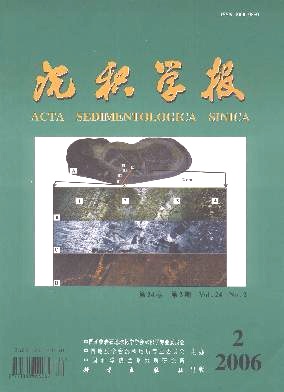Grain Size Distribution Characteristics of Different Geogenetic Types of Sandy Desertification and Their Geological Significance in Southeast Mo Us Desert
- Received Date: 1900-01-01
- Rev Recd Date: 1900-01-01
- Publish Date: 2006-04-10
-
Key words:
- Mo Us desert /
- sandy desertification /
- insitu sandy desertification /
- wind drifted sandy desertification
Abstract: Sandy desertification in southeast Mo Us desert and its neighboring regions, according to their material origins〖KG*2〗and physiographic〖KG*2〗characteristics, can be classified into four types, sandy land insitu type, flow valley in situ type, weathered residual insitu type and finally the wind drifted type. The sands of sandy desertification of sandy land insitu type come from both palaeoaeolian〖KG*2〗sand and those of paleoor modern fluvial or lacustrine facies. Sands of this type of desertification have the characteristics such as coarse grain, of which mid grain size are between 200-300μm or even bigger than 1mm, lower standard〖KG*2〗deviation, and narrow and positive leaning distribution〖KG*2〗patterns. Researches on grain size parameters show that their formation environment is likely fluvial.
Sandy desertification of valley insitu type distributes mainly in river valleys and their neighbored regions, such as flood beds, terraces and nearby districts. Sands of this type may have varieties of sources, such as modern and paleo fluvial or flooded sediments Quaternary Epoch.
Sands of this type have the characteristics of broad range mid grain size (40-445μm), middle degree of sorting, narrow and positive leaning distribution patterns. These features suggest that the sands of river valley type desertification are mixtures of different geologic processes, mainly fluvial and aeolian.
Weathered residual insitu type desertification are formed by the erosion and separation by wind and fluvial forces of any sediments occurred in the region. During this process, fine grains become less and less, coarse grains remained. This type of sandy desertification mainly occurred in the north part of loess plateau. Their sands may come from paleoaeolian sands, sandy loess, paleosols as well as paleofluvial terrace sediments. Reactive paleoaeolian sands have the characteristics of both homogeneous in limited areas and features of different layers. Palaeoaeolian sands have twograin grades in the studied area, of which average grain size are between 23-60μm and 152-202μm respectively. They also have narrow, positive leaning distribution curves.
Wind drifted sandy desertification have the characteristics such as coarse grained sands (140-310μm), low clay contents ( <5% ), and very narrow and positive leaning distribution curves. This suggests that they are the products of modern windblown sands.
For the purpose of combating sandy desertification of different genetic type, it is important that different protect and renovate measurements should be used. It is strongly suggested that using the methods of seeding grasses and manpower projects to fix the drifting sands during combating sandy land insitu desertification. As for the river valley in situ desertification, the methods of reducing soil erosion, protecting terraces and flood beds should be firstly used.
To deal with the weathered residual desertification, methods of reducing water and wind erosion protecting finegrain materialsfrom losses can be used, such as reducing herding, vegetation and plantation. Finally, for combating wind drifted sandy desertification, manpower projects can be used to reduce wind harm and organic measurements to increase the percentage of coverage.
| Citation: | LI Zhipei. Grain Size Distribution Characteristics of Different Geogenetic Types of Sandy Desertification and Their Geological Significance in Southeast Mo Us Desert[J]. Acta Sedimentologica Sinica, 2006, 24(2): 267-275. |






 DownLoad:
DownLoad: